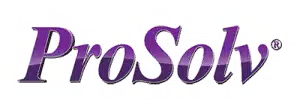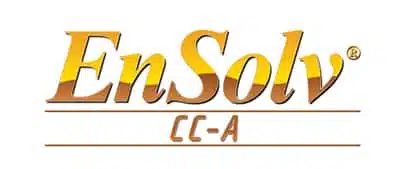Latest Articles
Vapour degreasing engineering fluid for precision cleaning applications
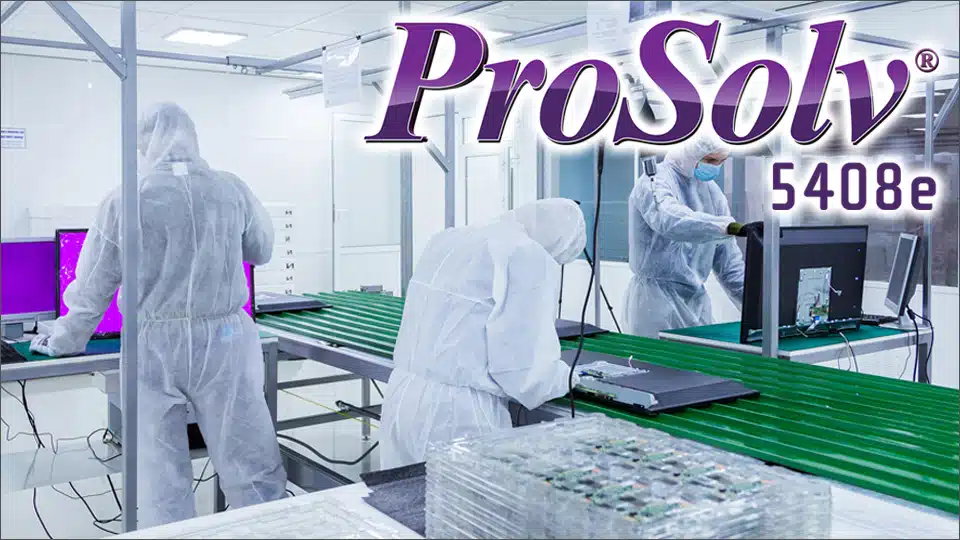
Vapour degreasing engineering fluid for precision cleaning applications
A fluorocarbon vapour degreasing engineering fluid for precision cleaning applications that has been developed by EnviroTech Europe Ltd for parts cleaning or cleaning automated machinery at strip down.
ProSolv® 5408e offers future-proof cleaning and can offer savings without compromising quality. Substitution is simple with little or no changes to equipment or control settings needed. Friendly to the environment it has zero Ozone Depletion Potential (ODP) and a very low impact on Global Warming (GWP). In addition, it is a non-flammable stable azeotrope needing no testing for acid acceptance or stabilising additives, easy to use and maintain and safer for employees and the workplace.
ProSolv® 5408e is extremely effective for precision cleaning in high-tech industries such as aerospace, aviation, electronics and medical device cleaning due to the use of an additive trans 1,2-dichloroethylene. This produces a powerful cleaning solvent with a very low surfaces tension that cleans blind holes and the smallest gaps more effectively at a lower cost. With these wide range of properties ProSolv® 5408e is particularly effective when used with ultrasonics.
ProSolv® 5408e can usually be used in existing degreasers or dip tanks. The fluorinated solvents are ideal for the cost-conscious user for precision cleaning and degreasing of electronics, metals and glass. It can be used to remove adhesives, fluxes, pastes, buffing compounds, greases, silicone oils, particulates, resins, waxes and other oils and soils.
Zero Ozone Depletion Potential (ODP) and very low Global Warming Potential (GWP) solvent blend for high performance vapour degreasing
ProSolv® 5408e ticks all the boxes with the perfect profile for a vapour degreasing solvent, developed by EnviroTech Europe Ltd for precision parts cleaning or cleaning automated machinery at strip down.
ProSolv® 5408e offers improved cleaning at a lower cost, without compromising quality. Substitution is simple with little or no changes to equipment or control settings needed. A non-flammable stable azeotrope needing no testing for acid acceptance or stabilising additives, easy to use and maintain and safer for the workplace.
ProSolv® 5408e is extremely effective for precision cleaning in high-tech industries such as aerospace, aviation, electronics and medical device cleaning. It can be used in most solvent cleaning systems, one tank vapour degreasing or multi tank immersion / vapour tank systems using ultrasonics or flush cleaning for complex mechanical and electronic components with blind holes and channels and close mounted electronics or for removing grinding and buffing soils on surfaces. Exceptionally low surface tension to penetrate micron sized holes and close contact surfaces.
ProSolv® 5408e is highly effective when used with ultrasonics and can usually be used in existing degreasers or dip tanks. Ideal for precision cleaning and degreasing of electronics, metals and glass. It can be used to remove adhesives, fluxes, pastes, buffing compounds, greases, silicone oils, particulates, resins, waxes and other oils and soils. Soft on the environment, low solvent losses, reduced costs, sustainable and secure for the future.
BENEFITS
EFFICIENT AND ECONOMICAL
- Fast precision cleaning, short cycle times. Stable with no additives, no testing required
- Alternative to Methylene Chloride, Perchloroethylene and High ODP/GWP Fluorocarbons
- Excellent choice to replace flammable solvents such as MEK, Acetone, Isopropyl Alcohol (IPA) or Hydrocarbons
- Established replacement for Trichloroethylene, n-Propyl Bromide (nPB) and other now banned solvents
- Can be used in any vapour degreasing equipment, lower energy consumption and lower maintenance. Compatible with a broad range of substrates
- Improved productivity, parts exit the machine cool, dry, spot-free with no drying required
- High density solution, excellent for ultrasonic cleaning
- Mid-range temperature operation, easier handling, mid-range boiling point, processed components easily handled (48°C)
- Very low surface tension for penetration into the micron level crevices and holes, efficient cleaning in tight to reach places and complex geometries
- Easy process monitoring with minimal effort and minimal waste generation, easy reclamation for reuse
- Minimal non-volatile residue
- High Solvency (KB Value 98) for a variety of contaminants
SAFE FOR USERS AND THE ENVIRONMENT
- Safe for the environment, zero Ozone Depletion Potential (ODP)
- Very low impact on Global Warming (GWP)
- Non-hazardous for transportation
- Non-flammable (No Flash Point)
- Not classified as a carcinogen
FURTHER INFORMATION
Please visit our website https://www.envirotech-europe.com/prosolv5408e for information about other uses and applications for ProSolv 5408e.
Visit www.envirotech-europe.com/applications-and-case-studies for information about uses and applications for all EnviroTech Europe products.
For more advice, please telephone us on +44 (0) 20 8281 6370 or use our website contact form.
All products are supplied and supported by EnviroTech Europe Ltd. Manufactured in the United Kingdom and available on short delivery times through our dedicated team of distributors worldwide.
Share this page:
Related Posts
Vapour Degreasing Solvents – Innovation driven by legislation
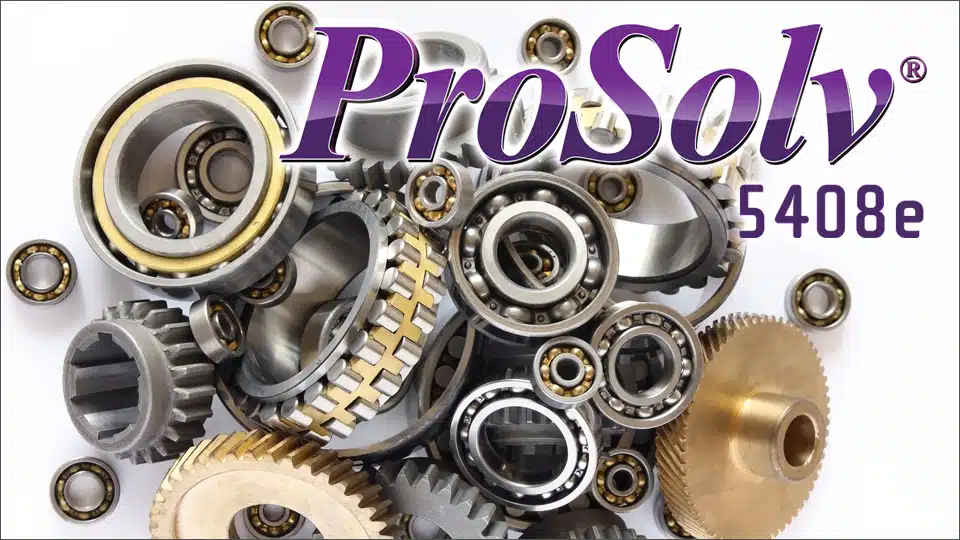
Vapour degreasing Solvents – Innovation driven by legislation
Chlorinated hydrocarbons have historically been the solvents of choice for vapour degreasing – compatible with most materials, stable in use, producing a non-flammable saturated vapour heavier than air at a temperature greater than ambient. Traditional solvents such as trichloroethylene exhibited all these characteristics but concerns about its carcinogenic properties and the danger to operators by exposure, led to a continuing search for a safer alternative. 1,1,1 trichloroethane based formulations became popular in the last century as a safer replacement. Although safer for users, it proved to be depleting the Ozone Layer and was subsequently banned. N-Propyl bromide (nPB) based formulations became popular in the last part of the century as a safer replacement, but this was later put in Annex 14 of REACH by the EU and can no longer be used as a vapour degreasing solvent in Europe. Countries around the world are now setting increasingly stringent environmental legislation to control emissions of Ozone Depleting and Global Warming industrial cleaning solvents. This has led to new chemical formulations being developed for industry.
Over 20 years of innovation for industry
EnviroTech Europe Ltd have been supplying vapour degreasing solvent formulations for over 20 years, constantly responding to regulatory requirements for environmental and safety laws and the need for improved standards. Staff and distributors are highly trained to work with customers to advise on the use of industrial cleaning solvents, helping them to navigate through legislative changes and ensure their vapour degreasing and cleaning solutions remain within regulatory boundaries.
Customers may have recently read in the industry press about another major industrial supplier ceasing production of their range of fluorocarbon containing metal degreasing and vapour degreasing solvents. They may be concerned that other major suppliers will follow suit.
Envirotech Europe would like to assure the industry of its intention to continue the manufacture of its ProSolv® range of metal cleaning and vapour degreasing solvents for the foreseeable future.
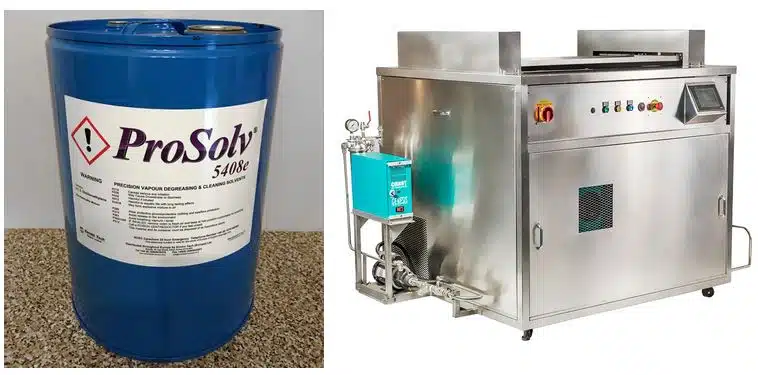
Zero Ozone Depletion Potential (ODP) and very low Global Warming Potential (GWP) solvent blend for high performance vapour degreasing
ProSolv® 5408e ticks all the boxes with the perfect profile for a vapour degreasing solvent, developed by EnviroTech Europe Ltd for precision parts cleaning or cleaning automated machinery at strip down.
ProSolv® 5408e offers improved cleaning at a lower cost, without compromising quality. Substitution is simple with little or no changes to equipment or control settings needed. A non-flammable stable azeotrope needing no testing for acid acceptance or stabilising additives, easy to use and maintain and safer for the workplace.
ProSolv® 5408e is extremely effective for precision cleaning in high-tech industries such as aerospace, aviation, electronics and medical device cleaning. It can be used in most solvent cleaning systems, one tank vapour degreasing or multi tank immersion / vapour tank systems using ultrasonics or flush cleaning for complex mechanical and electronic components with blind holes and channels and close mounted electronics or for removing grinding and buffing soils on surfaces. Exceptionally low surface tension to penetrate micron sized holes and close contact surfaces.
ProSolv® 5408e is highly effective when used with ultrasonics and can usually be used in existing degreasers or dip tanks. Ideal for precision cleaning and degreasing of electronics, metals and glass. It can be used to remove adhesives, fluxes, pastes, buffing compounds, greases, silicone oils, particulates, resins, waxes and other oils and soils. Soft on the environment, low solvent losses, reduced costs, sustainable and secure for the future.
FURTHER INFORMATION
Please visit our website https://www.envirotech-europe.com/prosolv5408e for information about other uses and applications for ProSolv 5408e.
Visit www.envirotech-europe.com/applications-and-case-studies for information about uses and applications for all EnviroTech Europe products.
For more advice, please telephone us on +44 (0) 20 8281 6370 or use our website contact form.
All products are supplied and supported by EnviroTech Europe Ltd. Manufactured in the United Kingdom and available on short delivery times through our dedicated team of distributors worldwide.
Share this page:
Related Posts
Vapour degreasing – A guide for production engineers

Vapour degreasing – A guide for production engineers
This guide for production engineers explains why vapour degreasing is the most effective and economical process for cleaning of manufactured components. The start of a new year is always a good time to review your existing cleaning process and ask yourself ‘am I using a safe modern solvent for vapour degreasing?’.
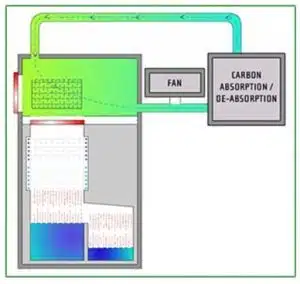
The cleaning tank in the corner of most engineering shops hides a very well researched process using sophisticated chemistry. Its popularity is in its simplicity. The tank sump is heated, fitted with cold coils around the internal surfaces at the top to retain the vapour. Fill to a few centimetres with a non-flammable solvent able to dissolve contaminants, boil to form a vapour 3 to 4 times heavier than air to fill the tank. Hot solvent vapour condenses on the cooler target parts at workplace temperature. The hot liquid solvent dissolves oil and grease and other contaminants. Used solvent returned to the sump revaporises continuing the cycle until parts have achieved the same temperature as the vapour when, with no further condensation, the process is complete. Simple but perfect. Highly productive and economical, parts removed from the cleaning process are clean, warm, and dry in 5 to 10 minutes.
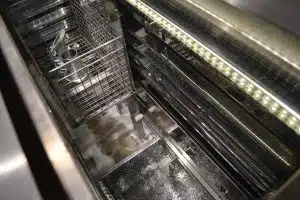
As with coatings, cleaning systems have had to change. With increasingly demanding standards of cleaning required for precision engineering, electronics, optics etc solvents are often first choice, for reasons outlined above, but these have been targeted by regulators and alternatives are encouraged by the relevant authorities and law makers often without serious consideration of unintended consequences. For example, water-based cleaning is encouraged as the obvious alternative, but this has many disadvantages compared to condensation cleaning as although the machines are simple and relatively cheap the processes require multiple heated tanks for immersion or spray processing or long programmed cycles in batch machines for cleaning, rinsing, and drying. Water based processes are slow, energy intensive and occupy more floor space than solvent-based condensation cleaning equivalents where only one tank with a small footprint is needed, delivering shorter process times and, most importantly for the environment, using minimal energy.
The ideal cleaning process would be “Condensation Cleaning” using water but due to the physical characteristics of the water vapour/steam and the inability to carry onto the surface of the targeted parts surfactants to remove the oil, grease and soils and the difficulty and expense of rinsing and especially drying this can only ever be a dream.
Historically chlorinated hydrocarbons have been the solvents of choice for the “Condensation Cleaning” process. Compatible with most materials of manufacture, stable in constant use, producing a non-flammable saturated vapour three to four heavier than air at a temperature greater than ambient. The traditional solvents such as trichloroethylene exhibits all these characteristics however concerns about its carcinogenic properties and the danger to operators by exposure, led to a continuing search for a safer alternative. 1,1,1 trichloroethane based solvent formulations became popular in the mid part of the last century as a safer replacement. An excellent solvent, safer for users, it proved to be depleting the protective ozone layer around the Earth and was subsequently banned. With the development of the REACH legislation in Europe, trichloroethylene was again allowed with restrictions and stringent controls for use in authorised machines which control emissions to very low figures close to zero.
High performance vapour degreasing and cleaning
EnviroTech Europe have been supplying vapour degreasing solvent formulations for 40 years constantly responding to increasingly stringent regulatory requirements for environmental and safety laws and the need for improved cleaning standards. ProSolv® 5408e is a new sustainable solvent blend with near zero OPD (Ozone Depletion Potential) and GWP (Global Warming Potential) for high performance degreasing and cleaning which ticks all the boxes with the perfect profile for a vapour degreasing solvent. Soft on the environment and safer for users with high performance, improved cleaning, and lower costs. Lower boiling point, economical with energy with low solvent losses, faster production, reduced costs, easy handling. Exceptionally low surface tension to penetrate micron sized holes and close contact surfaces. Sustainable and secure for future use as your ‘forever solvent’.
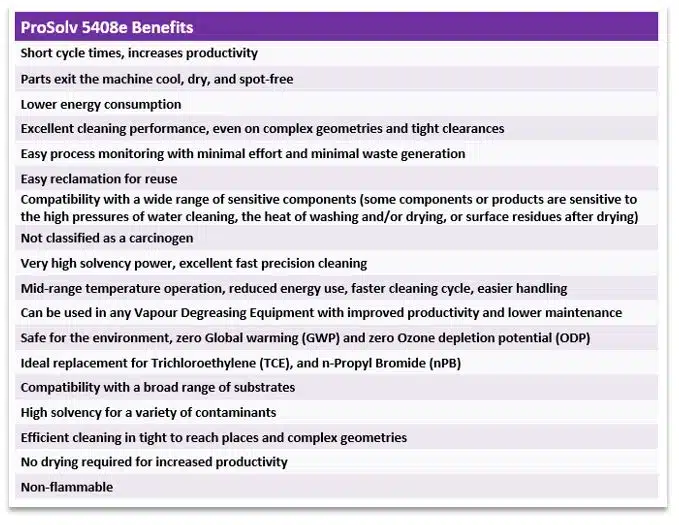
Sealed Tanks
As with all legislation for chemical use regulation and restrictions drive development of associated processes and equipment. Sealed tanks are now standard with many different designs available. The most common are discussed below.
The single tank hermetically sealed machines favoured by some manufacturers uses a process tank to contain the solvent and a separate storage tank/vapour generator. Baskets loaded with parts to be cleaned are introduced from the top or through access points on the side of the tank. Lids or doors hermetically seal the tank. Solvent is pumped into the process tank where agitation, ultrasonics or pumped liquid is circulated through the parts. Used Solvent is removed to the vapour generator, condensing coils controlling the vapour are linked to coils located in the vapour zone which, when the cycle is complete, collapse the vapour. The process tank is emptied. Controlled air introduced to process tank is then recycled through carbon absorption units to remove traces of solvent until the concentration is within regulatory standards when the lid is released for the basket of parts, clean and dry, to be removed and replaced with a further basket. Variations of process within the hermetically sealed tank are possible using sprays of cold or hot condensed solvent, immersion with or without ultrasonics and revolving baskets to cover most of the problems experienced when processing machined and fabricated parts. Continuous external distillation of the contents of the vapour generator is also an option depending on contamination.
The alternative technology is much simpler and uses well tried techniques not requiring the long recovery times of the hermetically vacuum sealed processes. The multilevel system uses a standard vapour degreasing tank design with a sealed loading section above the process tank. Components to be cleaned loaded in work baskets or jigs are fed to the load section by hand or conveyor, an internal platform raises and lowers the baskets in controlled cycles.
Loading complete – the load enclosure is sealed to completely isolate the process. Then seal on the process tank is opened and the basket automatically lowered into the cleaning section which can be simple condensation cleaning or immersion cleaning with or without ultrasonics or power sprays. Revolving baskets can also be added to improve cleaning in blind or through holes or oil ways in castings and fabrications.
On completion the basket rises to the area where the condensation coils are located, and parts allowed to drain and dry, basket raises into the load section when the process tank is sealed. A fan circulates air within the load area which can be recycled through carbon absorption systems if no external exhaust is preferred.
As baskets entering the loading space contain parts drained and dried only very small amounts of solvent are carried in the exhausted air which is monitored to ensure compliance with appropriate legislation. When this is complete the seal opens fully for removal of cleaned components. The loading section can be fitted with top or side seals allowing baskets to flow through on conveyor systems or be removed by hand or hoist. No solvent enters the work area. Both processes will produce parts cleaned to the highest standards but the choice of which offers the best solution needs a little more consideration.
The hermetically sealed vacuum process is complicated with the need to move liquids in the machine. It is relatively slow as the carbon adsorption process has to remove high levels of solvent from the recirculated airstream from the process tank. This is inefficient as adsorption rates for carbon fall rapidly with increasing saturation. Final levels of solvent in the tank when the lid or loading door opens will be dragged into the workshop and the area where the operator is working. Long process cycles reduce throughput.
The simpler multilevel systems where movement of liquids is not required are more efficient and offer much faster process times. Cost of manufacture is also reduced as no liquid movement or vacuum is involved. The extracted loading section ensures no leakage of solvent into the work area giving complete safety for operators and factory staff. Envirotech Europe also offers workplace air monitoring to ensure VOC’s from the solvent are within exposure limits and your machine is operating to specification.
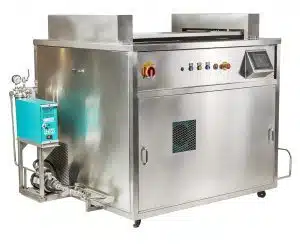
Both designs of process machines discussed above fully comply with the emission regulations of the EU and U.S authorities. Which to choose will depend on many factors which should be discussed with equipment and solvent suppliers who have the experience to advise on which offers the best process for the application. Equipment and solvent must work together, so it is advisable to ensure that the suppliers co-operate to offer a package with high levels of responsible care and product stewardship to ensure the best and safest installation. EnviroTech personnel and distributors are trained to work with equipment suppliers to advise on the use of ProSolv® 5408e vapour degreasing solvent for the most satisfactory outcome.
The “Condensation cleaning” process still gives the highest levels of economical cleaning with minimum energy usage, low footprint on the factory floor, safety for the operator, and high production rates with low solvent usage and environmental impact. With the new generation of sealed cleaning machines its future as the process of choice is assured.
Photograph of Solvac equipment courtesy of C&C Hydrosonics.
FURTHER INFORMATION
Please visit our website https://www.envirotech-europe.com/prosolv5408e for information about other uses and applications for ProSolv 5408e.
Visit www.envirotech-europe.com/applications-and-case-studies for information about uses and applications for all EnviroTech Europe products.
For more advice, please telephone us on +44 (0) 20 8281 6370 or use our website contact form.
All products are supplied and supported by EnviroTech Europe Ltd. Manufactured in the United Kingdom and available on short delivery times through our dedicated team of distributors worldwide.
Share this page:
Related Posts
Latest News
Degreasing And Cleaning – Key Questions To Ask
There can be no doubt that manufacturers of metal components have remained keenly interested in the advantages to be found in process cleaning, while being confused by the amount of misinformation that seems presented to them.
There can only be two reasons for this. These is an intention to mislead or simply a lack of understanding of the subject.
In any event, the user needs to take time to match what is said to what is fact. Too often companies generalise on the basis that they are not keen for users to look deeply at the subject, yet this is vital if good decisions are to be made.
In the end, the final judgement of the user is what matters but how many people express frustration at some of the suppliers they have met who spent more time criticising a proven product rather than validating their own.
Too often, suppliers are advising what not to do rather than dealing with what really works. This is negative selling and appears on the increase as the market shrinks, regulation gets tighter and independent specialists are more limited in numbers.
Recent history suggests that larger suppliers rely on their size to justify their competence when in fact the really satisfied customers are saying smaller companies with real specialists provided the best solutions.
No one can argue against the fact that the popular choice for metal cleaning and degreasing is still vapour degreasing. This is confirmed by the companies involved in making machinery for degreasing. The order books are heavily stacked in favour of vapour degreasing. If there is one slight disadvantage currently, lead times are often 20 weeks to delivery of machines.
It is clear though that these highly cost-effective systems, which use very little solvent, are likely to remain the first choice for some considerable time.
Arguments related to the Solvent Emissions Directive carry little weight with modern machines as they are so well engineered that they are compliant with regulatory requirements. If there is one common request made by users it remains that they wish there was a single company capable of offering the total solution, e.g. both their own product and machinery together. This would shorten the circle and place more pressure on the supplier to be responsible for promises made.
Most machinery companies work with a multitude of chemistry suppliers, since they want the maximum sale of machines, but should disputes arise this can be a protracted problem as it’s easy to blame someone else for the issues involved.
Much is said about vacuum and hermetically sealed systems being the best solution. They are certainly the most expensive. Speak to an independent specialist to ensure you know the limits of these machines and the cost benefits of alternative designs.
Suppliers who claim aqueous systems are superior need to ensure they advise the user that more energy, more space, longer cleaning cycles more risk of residues and waste disposal issues should be taken into account. Global warming is an issue for all of us so factor in the amount of energy required for heating and drying. To accept that water is safer or better, needs to be well argued. Never forget that water-based cleaning solutions need changing regularly and the oils and metals produced by these processes are waste and needs correct and very expensive disposal.
When considering vapour degreasing it will often be suggested that product transfer systems attached to the existing open-topped machine bring a number of benefits. For handling benefits it is true but never doubt they will not contribute to reducing your consumption, so will do nothing for emission targets.
The best way forward is to make a supplier talk to you about their own product. Beware of those who distract you from this. If a claim is made that seems suspect, ask for the claims to be made in writing. Transparency is a vital ingredient in any relationship with your supplier.
The target audience for most suppliers are those using the carcinogen Trichloroethylene. This is now banned for general use and requires specific authorisation for use in cleaning applications. Do your research, set the questions and insist on the evidence for the arguments put forward. Protecting your business, your staff and the community around you gives a sound basis to ensure a real assessment.
For more information about Vapour Degreasing Solutions please visit our website:
www.vapour-degreasing.com
We can provide you with a Material Safety Data Sheets, independent laboratory reports, product samples and technical assistance.
For more information or advice please telephone us on +44 (0) 20 8281 6370 or use our contact form.
All products are supplied and supported by EnviroTech Europe Ltd. Manufactured in the United Kingdom and available on short delivery times through our dedicated team of distributors worldwide.
Share this page:
Replace Banned Trichloroethylene
CONTENT ON THIS PAGE IS RETAINED FOR INFORMATION ONLY
DUE TO n-Propyl bromide now being included in Annex 14 of REACH
EnviroTech Europe Ltd (ETE) continue to publish it as historical information and to record changes occurring in legislation which have affected decisions on formulations and equipment used in vapour degreasing - the most effective, quickest, flexible and cheapest cleaning system used in industry.
EnSolv® invented and patented by EnviroTech has been a market leader all over the world for vapour degreasing. It is based on n-bromopropane (nPB) which now cannot be used as a vapour degreaser within the UK or EU without authorisation.
Archived information about EnSolv® can be found using the Discontinued Products & Resources navigation menu on this page.
Using experience accumulated over 40 years supplying and supporting users of the vapour degreasing process ETE specialists have developed “drop in” alternatives:
ProSolv®, ProSolv5408e® and EnSolv CC-A® give the same or improved level of performance and economy as the original EnSolv® products.
Please contact our advisers who are available to discuss your needs and propose the best replacement product.
Or please click here to return to our vapour degreasing products homepage for information about our current products.
Trichloroethylene is banned by the EU and will not be available after 21 April 2016.
Still using trichloroethylene for vapour degreasing?
The final EU “Sunset Date” is on 21 April 2016 when use of this solvent will be illegal without specific authorisation and unless very expensive fully enclosed vacuum equipment is installed. Exemptions are unlikely if an alternative is available.
Replace Trike now with EnSolv – the simple “drop in” replacement for Trichloroethylene.
EnSolv is stable, economical, a superb vapour degreaser operating at 70˚C which means less energy, easier handling, faster throughput and lower usage. Very safe for operators, EnSolv is a simple replacement using existing equipment which needs no new skills – resetting the thermostats is all that’s necessary.
Alternative solvents based on fluorocarbons are available but are not “drop in” replacements and are very expensive. The equipment needed to use these materials is not available off the shelf with equipment manufacturers quoting months for delivery.
EnSolv is supplied and serviced by an experienced, expert group of distributors, fully trained to carry out inspections of your equipment and processes and advise and support the changeover which can be done in hours.
A visit to your works by a member of our Trichloroethylene Substitution Team to survey, report and process samples to validate cleaning and compatibility with soils, oils and metals of construction is completely free and without obligation. You are also welcome to personally visit our Technical Centre, close to Stansted Airport, to test samples yourself and discuss your needs with our experts.
An alternative to vapour degreasing is water based cleaning systems. EnviroTech Surface Technologies can supply suitable materials for appropriate needs where the next part of the process, anodising or electroplating are water based or where use of solvent is not compatible with the materials used in manufacturing of components. But the installation costs, use of multi tanks taking up space which could be used for more productive and profitable uses, disposal of water and energy costs for drying are not economical when compared to simple substitution, by EnSolv using existing equipment.
We have the all facts for you to consider before you make the commitment. Call on the number below or go to our product website www.vapour-degreasing.com and book a free visit by one of the experts from our Trichloroethylene Substitution Team.
We can provide you with a Material Safety Data Sheets, independent laboratory reports, product samples and technical assistance.
For more information or advice please telephone us on +44 (0) 20 8281 6370 or use our contact form.
All products are supplied and supported by EnviroTech Europe Ltd. Manufactured in the United Kingdom and available on short delivery times through our dedicated team of distributors worldwide.
Share this page:
Don’t Miss The Trichloroethylene Deadline
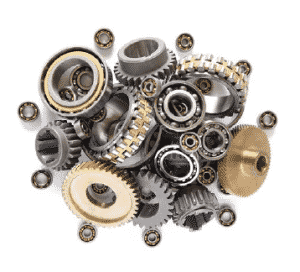 |
Trichloroethylene due to be phased out in April 2016.
ProSolv is a new, less expensive fluorinated solvent formulation for all precision cleaning applications.
ProSolv the new critical cleaning solvent has been developed by EnviroTech Surface Technologies as a “drop in” cost effective alternative which is less expensive than the current fluorocarbon formulations you may be using.
ProSolv offers future proof cleaning systems giving long term savings without compromising quality. Substitution is simple with no changes to equipment or control settings needed.
Users of trichloroethylene, which is due to be phased out as a cleaning solvent in April 2016, only 3 months away, may be able to use ProSolv as a cost effective replacement in many applications.
ProSolv is friendly to the environment it has zero Ozone Depletion Potential (ODP) and a very low impact on global warming. In addition, it is a non-flammable stable azeotrope needing no testing for acid acceptance or stabilising additives, easy to use and maintain and safer for employees and the workplace.
ProSolv like many other fluorinated solvent azeotropes is extremely effective for precision cleaning in hightech industries such as aerospace, aviation, electronics and medical due to the use of an additive trans 1,2-dichloroethylene.
This produces a powerful fluorinated cleaning solvent with a very low surfaces tension which cleans blind holes and the smallest gaps more effectively at a lower cost. With these wide range of properties ProSolv is particularly effective used with ultrasonics.
ProSolv can usually be used in existing degreasers or sprayed from an aerosol container. Our fluorinated solvents are ideal for the cost-conscious user for precision cleaning and degreasing of electronics, metals and glass.
ProSolv can be used to remove adhesives, fluxes, pastes, buffing compounds, greases, silicone oils, particulates, resins, waxes and other oils and soils.
ProSolv is only one of a wide range of cleaning solvents and solutions produced by engineering cleaning specialists EnviroTech Surface Technologies. Our Technical Centre in Essex is available for you to visit to test clean your components with ProSolv or compare results with the other products such as EnSolv or Clarea solvents we supply. Our technical team have extensive knowledge of equipment and systems to help you find the most effective, budget-friendly, future proof and environmentally conscious solution for your business. EnviroTech Surface Technologies have distributors located across the E.U. and Middle Eastern countries all of whom can offer technical advice and support.
We can provide you with a Material Safety Data Sheets, independent laboratory reports, product samples and technical assistance.
For more information or advice please telephone us on +44 (0) 20 8281 6370 or use our contact form.
All products are supplied and supported by EnviroTech Europe Ltd. Manufactured in the United Kingdom and available on short delivery times through our dedicated team of distributors worldwide.
Share this page:
Replace Trichloroethylene with ProSolv
Are you still using Trichloroethylene for Vapour Degreasing?
High performance cleaning at a lower cost than other fluorinated solvent cleaners
Trichloroethylene will not be obtainable for metal cleaning or other uses without authorisation after April 2016.
ProSolv® enables high performance cleaning at a lower cost than other fluorinated solvent cleaners. A proprietary tertiary azeotropic formulation based on a fluorinated solvent which provides a direct replacement for trichloroethylene and other chlorinated solvents.
ProSolv® is extremely stable and simple to use meeting all the increasingly stringent legislative demands for safer, non flammable solvents with a low environmental impact in the precision engineering industries.
ProSolv® can be used in most existing vapour degreasing equipment and can be used safely for immersion cleaning using ultrasonics, where it has been optimised with a high specific gravity and very low surface tension.
Unlike other chlorinated solvents ProSolv® can be used for manual cleaning in a suitably ventilated area. Typical applications are where high performance critical cleaning is required at lower cost than other fluorinated solvent cleaners. Vapour degreasing for medical, aerospace, optics, oxygen equipment service, high vacuum components and electronics.
ProSolv® is an excellent choice to replace flammable solvents such as MEK, Acetone, Iso propyl alcohol (IPA) or hydrocarbons where manual wiping or brush cleaning is the preferred cleaning method.
ProSolv® is a stable azeotrope which can be recycled by distillation for reuse through many cycles. It is a very stable mixture with no need for monitoring or the need for additives or stabilisers.
ProSolv® offers a cost effective replacement in formulations for dip, spray or aerosol applications and as a fast drying carrier solvent for oil, silicones and other lubricants.
We can provide you with a Material Safety Data Sheets, independent laboratory reports, product samples and technical assistance.
For more information or advice please telephone us on +44 (0) 20 8281 6370 or use our contact form.
All products are supplied and supported by EnviroTech Europe Ltd. Manufactured in the United Kingdom and available on short delivery times through our dedicated team of distributors worldwide.
Share this page:
SuperCORR A Keeps Flight MH370 search planes flying
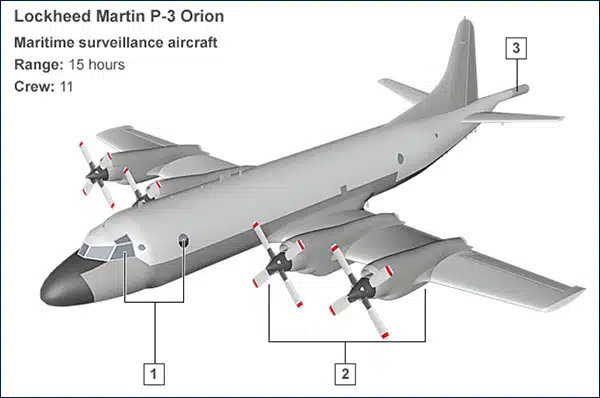
ABOVE:
1. The Lockheed Martin P-3 Orion is equipped with radar and infrared sensors as well as observation posts to help detect any debris on the surface of the ocean. It also has three cameras beneath the landing gear capable of zooming in for a closer look.
2. The four-engine turboprop plane is designed to fly low and slow to aid surveillance. Once it has reached the search location, one or two outer engines can be turned off to preserve fuel and extend the surveillance time.
3. The plane is also fitted with a magnetic anomaly detector (MAD) – used for detecting submarines underwater. The aircraft also has acoustic detectors, which are able to detect sound 1,000ft (304.8m) below the surface of the ocean.
SuperCORR A lubricant keeps Flight MH370 search planes flying
SuperCORR A the lubricant and anti-corrosion formulation from the CORR-EX division of EnviroTech Surface Technologies is helping in the search for the missing Malaysia Airlines flight MH370 passenger jet.
Lockheed Martin AP-3C Orion’s aircraft of the Royal Australian, Korean and Japanese Air Forces used for anti-submarine and maritime surveillance are still searching for debris in a vast area of ocean, bigger than the land area of Europe, southwest of Perth. The maintenance schedules specify SuperCORR A to lubricate and protect the flap tracks and screw jacks in the wings of the aircraft.
SuperCORR A lubricant and protective coating is widely used by the military, electronics and aerospace industries for critical applications to give the protection needed in extreme conditions. SuperCORR Adeposits a dry protective film with excellent corrosion protection and lubricant properties plus the added advantage of a hydrophobic surface rejecting water that ensures the easiest and best connections for very close spaced connectors, contacts, wiring and moving parts.
The U.S. Navy selected SuperCORR A after exhaustive testing using American Society for Testing and Materials (ASTM) Standard B117- Standard Practice for Operating Salt Spray Apparatus. SuperCORR A, a Type I, Grade B Corrosion Preventative lubricant out-performed 11 other products in comparative testing to identify a better product to protect and lubricate the flap tracks and screw jacks on the aircraft.
The flap tracks, located in the aircrafts wings, are what the flaps slide on when they move up or down to lower or increase speed. The screw jacks engage and retract the wing flaps. Corrosion on any of the surfaces can lead to snatching or vibration which can affect the pilots control.
Due to constant operation in salty and corrosive atmospheres which need post-flight rinses and monthly washing down of the aircraft re-lubrication and corrosion treatment for the flap tracks and screw jacks is required each time, with conventional lubricants, to prevent rusting. SuperCORR A was evaluated against competitive products under the Federal Test Method Standard #791B, using a five percent Salt Spray Corrosion Test.
SuperCORR A far exceeded the other products evaluated. After over 200 hours of continuous exposure to salt spray corrosion, SuperCORR A’s protection actually increased over time where the other similar products failed early or contributed to an increase in corrosion.
The accelerated salt fog corrosion testing demonstrated that the application of SuperCORR A which complies with MIL-L-87177A also increased electrical operation to 1400 hours versus 100 hours for the control product used at that time. Technical manuals were updated to include the application for electrical and mechanical parts for civilian and military operations.
The most important conclusion from the historical data and prototype testing is the availability of this excellent corrosion preventive compound that has dry film lubricant properties. The application of SuperCORR A on aircraft components can reduce maintenance man hours, reduce part replacement costs, increase life of aircraft, increase safety, and increase readiness.
Estimates for the maintenance cost for the US Air Force F-16 fleet can reach $500 million per year, the use at all military branches could reach billions of dollars per year. Applications at locations tested by the U.S. Air Force are not normally treated with corrosion prevention and control lubricants (CPC’s) These are the electrical connectors that are susceptible to subtle and not so subtle forms of corrosion that could interfere with the electrical operation of the F-16.
Testing by the U.S. Navy at NADEP Jacksonville incorporates not only electrical connectors, but mechanical and structural components as well. Future uses will also include ground support equipment. The properties of SuperCORR A are such that it can be used on a wide variety of applications and any materials, metal or plastic. Properties of the SuperCORR A far exceed the requirements defined by the MIL-L-87177A specification. Many beneficial properties of the product are not required in the MIL specification.
We can provide you with a Material Safety Data Sheets, independent laboratory reports, product samples and technical assistance.
For more information or advice please telephone us on +44 (0) 20 8281 6370 or use our contact form.
All products are supplied and supported by EnviroTech Europe Ltd. Manufactured in the United Kingdom and available on short delivery times through our dedicated team of distributors worldwide.
Share this page:
EnSolv and the Environment – Update from the Co Chairman of the United Nations Ozone Assessment panel on nPB.
CONTENT ON THIS PAGE IS RETAINED FOR INFORMATION ONLY
DUE TO n-Propyl bromide now being included in Annex 14 of REACH
EnviroTech Europe Ltd (ETE) continue to publish it as historical information and to record changes occurring in legislation which have affected decisions on formulations and equipment used in vapour degreasing - the most effective, quickest, flexible and cheapest cleaning system used in industry.
EnSolv® invented and patented by EnviroTech has been a market leader all over the world for vapour degreasing. It is based on n-bromopropane (nPB) which now cannot be used as a vapour degreaser within the UK or EU without authorisation.
Archived information about EnSolv® can be found using the Discontinued Products & Resources navigation menu on this page.
Using experience accumulated over 40 years supplying and supporting users of the vapour degreasing process ETE specialists have developed “drop in” alternatives:
ProSolv®, ProSolv5408e® and EnSolv CC-A® give the same or improved level of performance and economy as the original EnSolv® products.
Please contact our advisers who are available to discuss your needs and propose the best replacement product.
Or please click here to return to our vapour degreasing products homepage for information about our current products.
 |
| view/ download this document in Adobe Acrobat Format |
Analysis of Status on Science of n-PB Effects on Ozone
White Paper By Don Wuebbles (Department of Atmospheric Sciences – University of Illinois).
November 11, 2014
There is disagreement between the use of scientific information by the European Union and the United Nations Environmental Panel / World Health Organisation (UNEP/WHO) the authority for ozone depletion assessment. Dr. Don Weubbles acknowledged as one of the world authorities on ozone depletion and who Co Chaired the UNEP/WHO 2014 ozone assessment panel explains in detail why the official world study disagrees with the European Union Environment Agency 2014 assessment as not being supported by science.
EnSolv is safe for the environment backed by the most sophisticated and knowledgeable world scientists.
Analysis of Status on Science of n-PB Effects on Ozone
Don Wuebbles
Department of Atmospheric Sciences
University of Illinois
Urbana, IL
Phone (217) 244-1568
Email:Wuebbles@illinois.edu
November 11, 2014
I co-led chapter 5 (with Neil Harris of Cambridge University) of the 2014 WMO-UNEP ozone assessment that is currently in press (the summary, Assessment for Decision Makers, was released in September 2014 (WMO-UNEP, 2014)). Chapter 5, titled Scenarios and Information for Policymakers, of the full assessment, examines the latest understanding of a number of Ozone Depleting Substances (ODSs) including the available analyses of Very Short Lived Substances (VSLS) like n-propyl bromide (n-PB; C3H7Br). The full assessment will be released in early 2015 as a web-based report.
In Chapter 5 of the full assessment, we include the following text related to the evaluation of VSLS like n-PB:
Table 5-3 shows analyses of the spatial dependence in ODPs for VSLS primarily based on results using different versions of the NCAR global 3-D model (Wuebbles et al., 2009, 2011; Patten and Wuebbles, 2010; Youn et al., 2010; Patten et al., 2011). Note that this model calculates an atmospheric lifetime of 53.7 years for CFC-11, so the published ODPs would not be significantly affected by the revised SPARC (2013) lifetime for CFC-11. In these studies, the VSLS examined all have quite small ODPs based on emissions occurring primarily at midlatitudes. New approaches for estimating VSLS ODPs have been developed since WMO (2011) based on Lagrangian models (Tegtmeier et al., 2012; Pisso et al., 2010; Brioude et al., 2010), with similar findings to previous studies, except for emissions in the tropics where a different treatment of convection may allow for more VSLS (and their products) to reach the stratosphere.
The reported atmospheric lifetime and Ozone Depletion Potential (ODP) for n-PB in Table 5-3 for midlatitude emissions (30-60N), based on the 3-D chemistry-climate modeling studies of Wuebbles et al. (2011), are 24.7 days and 0.0049, respectively.
At the same time, we noted:
Earlier studies (Wuebbles et al., 1999, 2001; Olsen et al., 2000; Bridgeman et al., 2000) have shown that the ODPs for short-lived compounds depend greatly on when or where the emissions occur, with the largest ODPs being found for emissions in the tropics. Although it is generally expected that most emissions from anthropogenic emissions of VSLS will occur at Northern midlatitudes, there is no guarantee of this and the locations of future emissions could change.
In addition, we also reported upon an indirect study of the ODP using a semi-empirical approach based on the Lagrangian model analysis of Brioude et al. (2010). The results in Table 5-4 of WMO-UNEP Chapter 5 are taken from the Supplementary materials for that published paper. The results in Table 5-4 are quite a bit higher than Wuebbles et al. (2011) and show an ODP for n-PB of 0.0235 (0.0150-0.032) for North America emissions and 0.0150 (0.0070-0.0260) for European emissions. However, as noted in the chapter, the Brioude et al. results may be an overestimate because they do not properly account for reaction loss in the troposphere and therefore may have overestimated the amount of n-PB reaching the stratosphere. As stated in the Chapter:
The recent modeling studies also re-emphasize the point that VSLS ODPs are very dependent on the location of emissions, and not just the latitude; for example, by co-location with efficient vertical transport by deep convection into the stratosphere (semi-empirical ODPs as a function of specific locations of emissions based on Brioude et al. (2010) are shown in Table 5-4). Brioude et al. (2010) showed that these factors are more important than regional variations in VSLS losses by OH or photolysis. Using CO-like emissions to represent anthropogenic VSLS, they estimated ODPs for various compounds and found maximum ODPs over the Indian sub-continent varying from 0.079 in winter to 0.29 in summer for n-propyl bromide (C3H7Br or nPB) and from 0.13 in winter to 0.83 in summer for CH3I. Pisso et al. (2010) applied their new methodology to an nPB-like tracer with a lifetime of 20 days. They also found higher ODPs over southeast Asia in the summer (and over western Pacific in winter). In July in the tropics (30°N-30°S), ODPs varied from 0.33 in runs with convection to 0.17 in runs with no convection. Locally, values over southeast Asia are as high as 1.00. In general the results from these Lagrangian studies predict higher ODPs regionally compared to the global model results. These differences highlight uncertainties in simulating the transport of VSLS, with boundary layer mixing, convection depth and advection strength all possibly leading to local differences in VSLS delivery to the stratosphere (e.g., see Hossaini et al., 2012b; Feng et al., 2011; Hoyle et al. 2011). The global model studies (e.g., Wuebbles et al., 2011) used a full chemical treatment for VSLS and CFC-11 degradation in the stratosphere and more realistic degradation and wet deposition schemes for VSLS in the troposphere than the Lagrangian based studies (e.g., Tegtmeier et al., 2012; Pisso et al., 2010), leading to less VSLS reaching the stratosphere. Overall, these results point to potentially more important impacts from VSLS if emissions occur in regions close to convective regions in the tropics.
The 2014 report from the European Environment Agency, Ozone-Depleting Substances 2013, examines the European reporting requirement for n-PB and determines a total import of nPB to Europe of 1014.3 metric tonnes and a weighted ODP-tonnes for imported nPB of 101.4. This suggests they used an ODP of 0.1 for n-PB. This is far too large by either the Wuebbles et al. (2011) or the Brioude et al. (2010) analyses by roughly a factor of 6.7 for Europe emissions using the Brioude et al approach and a factor of 20.4 using the Wuebbles et al. 3-D model results. Because Wuebbles et al. may have underestimated the convection based on the observations used in the Brioude et al. study, the reality is likely somewhere between the two results, but this still suggests that the European Environment agency still used an ODP a factor of 10 or more too large. The science does not support the ODP used by the European Environment Agency.
References
Bridgeman, C.H., J.A. Pyle, and D E. Shallcross, A three-dimensional model calculation of the ozone depletion potential of 1-bromopropane (1-C3H7Br), J. Geophys. Res., 105, 26,493-26,502, 2000.
Brioude, J., R.W. Portmann, J.S. Daniel, O.R. Cooper, G.J. Frost, K.H. Rosenlof, C. Granier, A.R. Ravishankara, S.A. Montzka, and A. Stohl, Variations in ozone depletion potentials of very short-lived substances with season and emission region, Geophys. Res. Lett., 37, L19804, doi: 10.1029/2010GL044856, 2010.
European Environment Agency, 2014: Ozone-Depleting Substances 2013. EEA Technical Report No. 14/2014, Copenhagen.
Olsen, S.C., B.J. Hannegan, X. Zhu, and M.J. Prather, Evaluating ozone depletion from very short-lived halocarbons, Geophys. Res. Lett., 27, 1475-1478, 2000.
Patten, K.O., and D.J. Wuebbles, Atmospheric lifetimes and Ozone Depletion Potentials of trans-1-chloro-3,3,3-trifluoropropylene and trans-1,2-dichloroethylene in a three-dimensional model, Atmos. Chem. Phys., 10, 10867-10874, 2010.
Patten, K.O., V.G. Khamaganov, V.L. Orkin, S.L. Baughcum, and D.J. Wuebbles, OH reaction rate constant, IR absorption spectrum, ozone depletion potentials and global warming potentials of 2-bromo-3,3,3-trifluoropropene, J. Geophys. Res., 116, D24307, doi:10.1029/2011JD016518, 2011.
Pisso, I., P.H. Haynes, and K.S. Law, Emission location dependent ozone depletion potentials for very short-lived halogenated species, Atmos. Chem. Phys., 10, 12025-12036, 2010.
SPARC (Stratospheric Processes And their Role in Climate), Report on the lifetimes of stratospheric ozone-depleting substances, their replacements, and related species, M. Ko, P. Newman, S. Reimann, S. Strahan (Eds.), SPARC Report No. 6, WCRP-15, Zurich, Switzerland, 2013
Tegtmeier, S., K. Krüger, B. Quack, E.L. Atlas, I. Pisso, A. Stohl, and X. Yang, Emission and transport of bromocarbons: from the West Pacific ocean into the stratosphere, Atmos. Chem. Phys., 12, 10633-10648, doi:10.5194/acp-12-10633-2012, 2012.
WMO-UNEP (coauthor), 2014: Assessment for Decision-Makers: Scientific Assessment of Ozone Depletion 2014. WMO Global Ozone Research and Monitoring Project – Report No. 56, Geneva, Switzerland; also available on WMO website.
Wuebbles, D.J., K.O. Patten, M.T. Johnson, and R. Kotamarthi, New methodology for Ozone Depletion Potentials of short-lived compounds: n-Propyl bromide as an example, J. Geophys. Res., 106, 14551-14771, 2001.
Wuebbles, D.J., D. Youn, K. Patten, D. Wang, and M. Martinez-Aviles, Metrics for ozone and climate: Three-dimensional modeling studies of Ozone Depletion Potentials and Indirect Global Warming Potentials, in Twenty Years of Ozone Depletion, C. Zerefos, G. Contopoulos, and G. Skalkeas, editors, Springer Publishing, Dordrecht, The Netherlands, doi: 10.1007/978-90-481-2469-5, p. 297-326, 2009.
Wuebbles, D.J., K. Patten, D. Wang, D. Youn, M. Martínez-Avilés, and J. Francisco, Three-dimensional model evaluation of the Ozone Depletion Potentials for n-propyl bromide, trichloroethylene and perchloroethylene, Atmos. Chem. Phys., 2011, 11, 2371-2380, 2011.
Youn, D., K.O. Patten, D.J. Wuebbles, H. Lee, and C.-W. So, Potential impacts of iodinated replacement compounds CF3I and CH3I on atmospheric ozone: a three-dimensional modeling study, Atmos. Chem. Phys., 10, 10129-10144, 2010.
We can provide you with a Material Safety Data Sheets, independent laboratory reports, product samples and technical assistance.
For more information or advice please telephone us on +44 (0) 20 8281 6370 or use our contact form.
All products are supplied and supported by EnviroTech Europe Ltd. Manufactured in the United Kingdom and available on short delivery times through our dedicated team of distributors worldwide.
Share this page:
Oxygen Cleaning
Cleaning For Oxygen Service Whitepaper
White Paper By Phil Dale (Co-contributor Handbook for Critical Cleaning – Liquid Displacement Drying Techniques).
Cleaning for oxygen service is best defined as the removal of combustible contaminants from the surface of any equipment or system in oxygen service, including all parts thereof. Essentially, any component that may come into contact with an oxygen rich environment.
The combustible contaminants include organic and inorganic substances such as hydrocarbon material for example oils and greases, paper, fibre, coal dust, solvents, weld slag, rust, sand and dirt. If these contaminants are not removed properly, in a worst case scenario, this can cause combustion in an oxygen atmosphere or at the least rejection of the product due to unacceptable product purity.
Oxygen in its own right is not flammable but it supports combustion. Oxygen can react with most materials. The higher the oxygen content and/or pressure in a system the more vigorous the combustion and the lower the ignition temperature required. Materials that do not normally ignite in atmospheric air will burn and may explode in an oxygen rich environment. In addition the oxygen rich environment will give rise to a higher flame temperature and combustion velocity and the devastating consequences thereof.
The recognition of oxygen’s reactivity has led to stringent requirements regarding the cleanliness of equipment in oxygen service. Strict guidelines exist to ensure that care must be taken in the selection of equipment including all materials and components, all of which need to be oxygen compatible. They must also be free from combustible contaminants as described above.
With this in mind special consideration must be given to any cleaning processes employed in the manufacture and maintenance of all oxygen service systems.
Specific consideration must be given to the following:
- cleaning standard to be achieved (how clean is clean?)
- cleaning procedure specified (or not)
- cleaning agent to be used
- surface properties of the parts to be cleaned
- shape and geometry of the material
- types and amounts of contaminants
- the degree of automation required
The size and capacity of the equipment is determined from:
- the size of the material or components to be cleaned
- the required throughput
Your starting point should be the cleaning standard and procedure. For example *G93 indicates that solvent cleaning is preferable. Solvent cleaning and solvent vapour phase cleaning of components consists of the removal of contaminants by immersion in the solvent, possibly with the addition of ultrasonic agitation and the action of continued condensation of solvent vapour on the component surfaces. The procedure requires that the oxygen equipment, system or component is colder than the solvent boiling point. This allows the vapour to condense on the components and perform a final rinse.
The major significant advantage of solvent cleaning is that re-vaporised solvent is always clean and the contaminants remain in the evaporator liquid section which requires only periodic cleaning out, thus causing a reduction in the frequency of system downtime.
It is also important to note **G127–95 (Reapproved 2000). The effectiveness of a particular cleaning agent depends upon the method by which it is used, the nature and type of the contaminants and the characteristics of the article being cleaned, such as size, shape, and material. Final evaluation of the cleaning agent should include testing of actual products and production processes.
All equipment must, together with the cleaning chemistry, fulfil as a minimum the legislation for health, safety and environment.
The choice of equipment has to be based on the efficiency of cleaning versus cost bearing in mind what is the cost of the problem? If there is no cost there is no problem.
The efficiency is controlled by utilising typical samples, written procedures and requested criteria for cleanliness.
If you need to clean to ASTM G93 – 03(2011) Standard Practice for Cleaning Methods and Cleanliness Levels for Material and Equipment Used in Oxygen-Enriched Environments then all of the above needs to be given due consideration.
*G93 – Standard Practice for Cleaning Methods and Cleanliness Levels for Material and Equipment Used in Oxygen-Enriched Environments
**Designation: G127 –95(Reapproved 2000) Standard Guide for the Selection of Cleaning Agents for Oxygen Systems.
Handbook for Critical Cleaning, Second Edition – 2 Volume Set Hardcover – April 4, 2011by Barbara Kanegsberg (Editor), Edward Kanegsberg (Editor)
We can provide you with a Material Safety Data Sheets, independent laboratory reports, product samples and technical assistance.
For more information or advice please telephone us on +44 (0) 20 8281 6370 or use our contact form.
All products are supplied and supported by EnviroTech Europe Ltd. Manufactured in the United Kingdom and available on short delivery times through our dedicated team of distributors worldwide.
Share this page:
New study disputes TLV for nPB
A detailed comprehensive review of 1-bromopropane studies confirm current recommendations by EnviroTech for occupational exposure levels for safe usage of EnSolv® as a vapour degreasing solvent.
 |
| view/ download this document in Adobe Acrobat Format |
Update on a safe occupational exposure level for 1-Bromopropane
Prepared for EnviroTech Europe, Ltd.
Prepared by Dr. Mark Stelljes
SLR International Corporation
September 2014
Executive Summary
This paper re-evaluates EnviroTech Europe’s (ETE’s) current occupational exposure level recommendation of 100 ppm for 1-bromopropane (1-BP) [106-94-5] in the vapor degreasing industry in light of the recent lowering of the ACGIH Toxicity Threshold Value (TLV) from 10 ppm to 0.1 ppm. The 0.1 ppm value is based on a study of 86 workers exposed to 1-BP during its manufacturing in China in four different facilities. The authors reported significant effects at all 1-BP exposure levels down to 1.28 ppm. The 1-BP in these facilities had concentrations of the isomer 2-bromopropane [75-26-3] (2-BP) present as a contaminant at about 10-20 times the level sold for vapor degreasing.
There are several factors that undermine the conclusions reached in the paper that a concentration of 1.28 ppm resulted in toxicity in exposed workers. These factors were related to:
(1) Exposure measurements – passive rather than active samplers were used, and concentrations varied by more than tenfold for the same activity.
(2) Exposure via other routes in addition to inhalation – described worker activities indicate substantial dermal exposure, which increases the overall dose of the chemical relative to just inhalation exposure.
(3) Exposure to other chemicals – at least 20% of the workers were previously exposed to 2-bromopropane
(2-BP), and no testing was done for other chemical exposure.
(4) Statistical methods and interpretations – instead of using paired patient-exposure data, authors categorized exposure into groups (e.g., high, low); this resulted in apparent statistical relationships that may not be biologically relevant.
(5) Lack of robust dose-response relationships – when evaluating typical doseresponse relationships, only a single parameter (vibration sense in the toes, a subjective parameter) was shown to be significantly different across all dose levels.
(6) The outcome of the subjective vibration sense test was in part dependent on the testing doctor – this dependency should remove the test and its results from consideration in the paper as a scientifically defensible endpoint.
When all of this information is considered as a whole, it is unlikely that the 1.28 ppm lowest effect concentration reported in the paper is accurate. The interpretations in the Li et al. study are inconsistent with expectations based on the ways in which 1-BP acts in rodents relative to humans. Studies on how 1-BP acts in the body of rats and mice and studies on metabolism of the chemical in humans indicate that humans should be no
more sensitive to 1-BP than either of these rodents.
Based on the weight of evidence available for the toxicity of 1-BP in humans and rodents, there is no credible scientific reason to target an occupational concentration as low as 10 ppm or 0.1 ppm. ETE’s current recommendation of 100 ppm should be maintained, and employers together with vapor degreasing personnel should not be concerned about the much lower levels recommended by the ACGIH.
We can provide you with a Material Safety Data Sheets, independent laboratory reports, product samples and technical assistance.
For more information or advice please telephone us on +44 (0) 20 8281 6370 or use our contact form.
All products are supplied and supported by EnviroTech Europe Ltd. Manufactured in the United Kingdom and available on short delivery times through our dedicated team of distributors worldwide.
Share this page:

